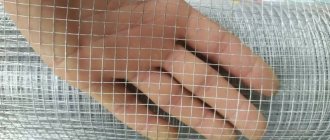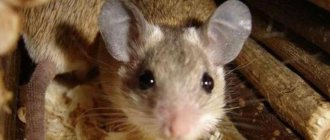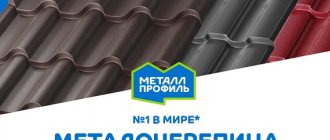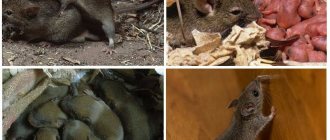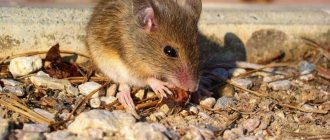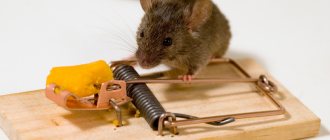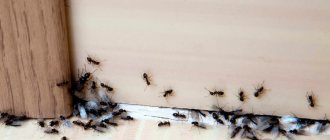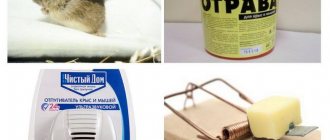sells galvanized mesh to protect against mice and rats. No “rods”, “strings” or joints, just a solid sheet!
OC mesh 6x6 for 149 rubles/sq.m., roll size 1x10m, OC mesh 10x10 for 107 rubles/sq.m., roll size 1x15m.
The warehouse store is located at: Moscow, st. Remizova 14k1 (m. Nagornaya) Delivery and pickup available! We take away unspent surpluses!
Phone Website: https://setkamsk.ru
Where do mice go?
Due to the peculiarities of its construction, a frame house is an attractive place for a rodent to stay. A wooden or, less commonly, metal frame made of racks, support beams, and struts is sheathed on the outside and inside with protective and finishing materials. Slab insulation is laid inside the hollow walls. Floors are often arranged on joists, between which thermal insulation is placed in the form of rolls or slabs.
The technology involves installing ventilation gaps to remove condensate and circulate air in structures. This protects them from rotting and moisture accumulation.
At the same time, all cracks and technological gaps are an accessible route for mice to enter. Favorite habitat is insulation slabs. Rodents make passages in them, make nests, and breed numerous offspring.
Mouse fuss is annoying, but in addition to this, considerable damage is caused to the insulation. The structure loosens and disintegrates over time, which leads to loss of heat-insulating properties.
Research conducted in the USA at the University of Fisheries, Forestry and Wildlife Sciences found that over six months of rodent activity, the thermal conductivity of insulation increases 5 times.
The experiment involved families of house mice. They were planted for 6 months in imitation walls, insulated with common types of insulators for frame, brick and concrete houses - extruded polystyrene foam, basalt or glass wool, vermiculite, cellulose ecowool. Foil vapor barriers and isocyanate did not stop the sharp teeth.
Being near mice is dangerous for electrical wiring. Violation of the insulation from the sharp teeth of rodents can lead to a short circuit and even a fire.
Wooden structures - frame elements, floors, ceilings - are thoroughly damaged by gray animals. These are undesirable phenomena that lead to a gradual loss of strength and disruption of the aesthetic appearance of the finish.
Weaknesses in frame buildings
With the onset of cold weather, mice move closer to people in search of warmth and food. And frame houses become housing for small pests not only for the winter.
With the onset of spring, they will definitely not leave the house due to constant access to food, in addition, they will begin to actively reproduce.
When building a frame house, it is impossible to avoid gaps at the joints; technological gaps are necessary for ventilation. The floor is usually installed on joists, between which roll or tile thermal insulation is laid.
It is also mounted inside the walls. Pests can chew through inexpensive materials, such as polystyrene foam, and build entire labyrinths of passages. As a result, the thermal insulation layer becomes unusable.
Rodents enter the house through cracks in the foundation, floor and basement. This area should be protected during the construction phase.
Formidable enemies
House mice are the largest population of mammals. They reach a length of 9.5 cm and a weight of 30 g. Thanks to the property of synanthropy - coexistence with humans - they are perfectly adapted to his lifestyle and housing. They live everywhere except in the Far North and Antarctica.
A little mouse can run 5 km in search of suitable housing. She is especially active at the end of summer and autumn, as she really does not like cold weather. It digs holes in the ground to a depth of 60 cm. It moves along constant routes, leaving paths of dust and droppings, holding them together with urine. Its specific smell indicates the existence of a rodent in the room.
Mice live in families where there are several females per dominant male. The individual range around the nest is 900-1200 m². Rodents try not to leave the area.
House mice run fast, climb, jump, and swim well.
They breed all year round. One female can bring up to 120 cubs per year.
The centuries-old proximity of mice and humans is an indisputable fact. But the fact that 80% of the rodent genome is the same as the human genome still remains a mystery. This feature is used in science to study diseases and methods of treating them. The Methuselah Foundation, which deals with the problem of aging, awarded a prize in 2005 for the five-year longevity record of a laboratory mouse. A monument was erected to her in Novosibirsk Akademgorodok.
The house mouse's closest "companions" are gray and black synanthropic rats. Their lifestyle is similar to that of mice, but the damage caused to the farm is many times greater. Rodents, without any harm to their own health, damage lead and aluminum pipes and live cables, creating emergency situations in transport and communication networks.
A feature of a large rodent is the ability to adapt to poisons and the ability to think abstractly. Thanks to this, the pest population is constantly growing, despite active control - deratization.
Frame house protection
The most effective methods of protection against rodents will be those that were used during construction.
So, the first methods of prevention are:
- If it is possible to use reinforced concrete slabs, then it is recommended to make the foundation with them, and not with strip or pile foundations. It is extremely difficult to gnaw through them; such a monolithic structure will not allow mice to enter the frame house.
- Ecowool will be the best option as insulation for the floor of the lower floor. It consists of 80% recycled cellulose and a mixture of brown acid and borax by 20%. Such a wood antiseptic will not only protect against pests, but also protect against various insects, mold or mildew.
- It is recommended to treat building materials with lime and borax solution.
- Interior partitions can be filled with slag. In addition, they use tobacco dust, ash, wormwood, and peppermint, which repel mice with its smell.
- Metal mesh is also an excellent means of protection.
These methods are considered quite effective and prevent pests from getting into the frame house.
Application of metal mesh
When laying the foundation, it can be protected with steel sheets up to 1 mm thick. Thanks to them, rodents will not be able to get into the frame house, because the sheets are slippery, and mice will not be able to catch on and climb onto the foundation, sliding down.
Also at this stage it is advisable to use a metal mesh, which has a number of advantages:
- Environmental Safety.
- A simple and accessible method to use.
- Effective protection.
- Maintains characteristics when changing any temperature.
An important nuance is the correct selection of material. It will be good if the mesh thickness is about 2 mm, and the cell size is no more than 5x5 mm. If they are wider, then mice will either crawl into such a hole or gnaw through the mesh.
The metal mesh is laid out on the subfloor, after which insulation is placed on it. Wall mounting is carried out to a height of at least 1 m. For the corners of a frame house, you need to use galvanized mesh. If the mesh was not laid at the stage of forming the foundation, then it can be dug around the built house near the foundation. The depth should be about 1 m. A fence of this type can be decorated, for example, with climbing flowers.
Other methods of protection
Most often, mice enter frame houses through the floor, so it is very important to protect it as effectively as possible. In addition to metal mesh, the use of expanded clay is considered a reliable method. Apply it to the subfloor in several layers. First, expanded clay is sprinkled on the ground, a layer of at least 30 cm. Then a polyethylene film is stretched and OSB boards are placed. After this, the structure is again covered with expanded clay. For this method to be as effective as possible, it is necessary to treat the slabs with boric acid and use borax powder.
Insulation also plays an important role in protecting a frame house from mice. Most often they save on it, without attaching much importance, they choose the cheapest thermal insulation material - polystyrene foam. And this is a big mistake. Gnawing through it is not difficult. Therefore, it is recommended to use an expensive but reliable material – ecowool. In addition, it has excellent soundproofing characteristics, provides good insulation, and prevents the formation of mold or mildew.
Concrete barrier
Concrete is a reliable protection against rodents entering your home. Of course, if you want, you can defeat him, but in the conditions of a village or SNT, where there is a lot of more affordable housing, most likely the rodents will not waste time on taking this fortress. How does this apply in suburban construction? For example, choose a monolithic slab foundation or a foundation like an insulated Swedish slab (USP). A concrete foundation can protect a house from mice and rats, but this applies to protection from below. But the walls (especially of a frame house) remain unprotected. What to do in this case?
Profiled sheet
Another way to protect your home from the penetration of rats and mice is a metal profile sheet. They, like a net, need to enclose the home on all sides. But there is one nuance here: if you use a metal sheet in the subfloor, it is important to maintain a gap between it and the insulation. The fact is that condensation can form on the surface of the metal. If the insulation comes into contact with water, it will work less efficiently. In addition, to protect the floors, the simplest and cheapest corrugated sheet is used. But there are questions about this method of saving. Fences blown by the winds sometimes begin to rust, but if you lay such economical panels in the ceilings, how much protection will this be enough? Judging by the reviews, it is more convenient and cheaper to use a mesh.
Why are rodents dangerous?
Not only building structures, but also food supplies suffer from mice and rats. Having made their way into storage, animals are able to quickly destroy or contaminate cereals, vegetables, and fruits. They do not neglect anything, even soap, candles and glue, although they belong to the rodent species. In nature, the basis of their diet is plant seeds.
Clothes, shoes, books, furniture when they “meet” with mice become unsuitable for further use.
Being around rodents is dangerous for humans. Mice and rats carry severe, even fatal infections - pseudotuberculosis, plague, leptospirosis, tularemia. Infection occurs through contact with feces or the bite of blood-sucking arthropods that live on animals and easily pass to humans.
Recent studies have confirmed that the virus that causes tumors in the mammary glands of mice is contagious to humans and contributes to the development of breast cancer.
Preventive measures
Therefore, adhere to simple rules:
- They constantly carry out general cleaning, during which they find and throw away all found garbage that is not of household or other interest;
- do not leave scraps on the table, under the table, but promptly put them in a trash can with a lid;
- do not clutter the house and apartment with unnecessary things;
- all products are kept out of reach in tightly sealed containers;
- They periodically inspect the residential area, seal up any mouse holes found, having previously prepared an unpleasant surprise for the rodent using poison or a mousetrap.
https://youtube.com/watch?v=B7RpI6NGCkw
Fighting mice is not an easy task, but you can cope with the task. The main thing is to approach the issue with ingenuity and knowledge of the matter.
Metal mesh – barrier for rodents
In order to encounter mice and rats on your territory as rarely as possible, you need to make your home inaccessible to penetration from the outside. Protection of frame houses from rodents is carried out comprehensively - from the construction of the foundation to the extermination of pests when they appear.
To prevent mice from entering the house, galvanized metal mesh with a mesh size of up to 6 mm is used. This size is due to the ability of the animal’s skull to flatten to a minimum volume. Plastic protection is not reliable; rodents can easily deal with it.
Expanded metal mesh is ideal for this purpose. Even small rodents will not be able to squeeze through the small hole. They are made from sheet metal 0.45-0.50 mm thick by cutting diamond-shaped cells and then stretching them. The product is called abbreviated as TsPVS - all-metal expanded metal mesh.
The main application is reinforcing putties and plasters, but recently it has been widely used as protection of frame houses from mice and rats. CPVS weighs little and does not spread when deformed. It is durable, not susceptible to corrosion and the effects of sharp rodent teeth.
The mesh is attached directly to the frame with staples using a construction stapler or self-tapping screws with press washers. For installation on thermal insulation, special elongated clamps are used.
The price of the material is affordable - 70-160 rubles/m². The investment pays off with a restful sleep, saved nerves and money.
In addition to TsPVS, woven meshes with a mesh size of up to 6 mm and a wire thickness of 1.2 mm are used. They are more expensive - up to 250 rubles / m², but more powerful metal can stop not only mice, but also rats.
Rodents can go deep into the ground up to 50-60 cm. They enter the house through cracks in the foundation, basement and floors, so the main protection should be located at the level of these structures.
Professionals who have built dozens of frame houses advise how to protect a frame house from rodents using a mesh:
- Secure a vertical underground curtain around the perimeter along the base and foundation to a depth of at least 100 cm;
- Lay it on the subfloor with a layer preceding the insulation so that mice cannot get into it and settle in;
- Trim the outer corners of the building before finishing;
- Close ventilation gaps, chimneys, foundation vents and other technological openings.
Potential entry points for rodents will be covered with a barrier that is impenetrable to rodents. The main requirements for the mesh are cell size - up to 6 mm and sufficient thickness of the zinc layer. A mouse will fit into larger holes without difficulty, and poor quality galvanization will lead to rapid destruction of the base metal.
Features and purpose
The mouse net should be made of small diameter wire. The canvas is sold in rolls or sheets 1–2 m wide and 6–15 m long.
Network Applications:
- installation of fences, barriers;
- plastered surfaces;
- creation of a reinforcing belt;
- strengthen the foundation;
- for the construction of monolithic structures;
- when screeding.
Attention! To protect your home from rodents, you need to choose a mesh with a wire diameter of more than 0.4 mm. Otherwise, he will not be able to resist the invasion of uninvited guests.
Reliable methods for rodent control
If mice appear in the house, you can use traditional methods - poisoned baits, tobacco dust, mint, mousetraps, or more modern ones - ultrasonic repellers. But the most effective way is to prevent pest entry by installing protection during the construction phase.
Reinforced concrete slab
A monolithic foundation made of reinforced concrete is a strong foundation for the building and an insurmountable obstacle to the teeth of rodents. Mice and rats will not be able to penetrate a reinforced slab 25-30 cm thick. The remaining paths can be protected with fine mesh.
Expanded clay
A subfloor laid on the ground can be made impenetrable to rats and mice using expanded clay.
Expanded clay is poured onto the prepared base in a layer of 25-45 cm. A layer of lean concrete 3-5 cm thick is laid on top or poured with cement mortar. Then a dense waterproofing film or membrane is spread. The installation of floors is completed with screed, gypsum fiber or particle boards, and finishing.
Expanded clay is inedible for mice.
They do not make passages in it or make nests. They will not be able to settle in the insulation due to its friability.
Insulation
When choosing a heat insulator for a frame house, such a characteristic as damage by rodents is important. There are three categories of insulation materials, to which mice have different attitudes.
They never touch the first ones. This is foam glass in granules and slabs, glass wool, ecowool. Materials based on silicate raw materials injure the mucous membranes of the mouth. A thin layer of glass wool is enough to stop the rodent. Borax and boric acid, which are used to treat cellulose, are toxic to them. Therefore, the walls of frame houses can be insulated with these heat insulators without fear.
The second category is reluctant to be damaged by mice. These are basalt wool, extruded polystyrene foam, liquid expanding polyurethane foam. The materials are inedible to animal pests, but are permeable. They make passages through them and use fibers to make nests.
The third type of insulation is the most beloved and inhabited by rodents. This includes polystyrene foam and expanded polystyrene. In light, warm materials, gray pests create extensive labyrinths and nests in which they hatch numerous young.
To prevent uninvited tenants from settling in a frame house, high-quality, high-density materials are chosen for insulation.
The tougher they are, the less they attract rodents.
Metal bumpers
Used to protect against mice in houses on pile or strip foundations. They are circular ebbs installed around the perimeter of the building at the level of the top of the plinth. Their width is at least 36 cm.
A continuous strip of smooth metal 40-45 cm high will become an obstacle to rodents climbing the walls.
Some builders recommend mounting the base for the subfloor of a frame house on a pile foundation from sheets of steel, for example, corrugated sheets. This is a reliable way to prevent animals from entering your home.
Fighting methods
If mice do find their way into your home, you need to know how to get rid of them. There are many methods. The main thing is to choose the appropriate method, taking into account the type of structure and the number of pests.
Some people use poison, however, this is one of the worst methods because the mouse can die in the wall. You can only get it if you destroy the wall. The cadaverous smell will spread throughout the house, after which it will simply be impossible to stay in it. Even products that have a mummified effect leave an unpleasant odor, although less strong. In this regard, it is recommended to drive away mice or catch them.
Traditional methods
The following methods can be used by builders during the construction of a building or by residents after the construction process is completed. So, the techniques are as follows:
- To scare away, burnt logs are placed under the floor.
- Along with the insulation, tobacco dust, ash, chamomile, wormwood, mint, slag, dry burdock, and pine branches are added.
- Red hot pepper powder is sprinkled along the walls.
- Broken glass is placed under the floor.
These methods are the most popular, but there are others.
Useful: How much money do you need to build a house?
Mechanical means
Mousetraps, snares, and snares are often used to control rodents. It is better to place them along the walls in rooms where the mouse was noticed. At the same time, it is also necessary to seal the holes and cracks through which pests entered the home, otherwise new individuals will appear every time. You can buy such devices, or you can make them yourself. Let's look at some methods of preparing them.
Option 1. Cut off the neck of a plastic bottle, put bait inside and coat the walls with sunflower oil. Next, you need to lower the neck into the middle of the bottle and secure it with tape. A mouse can easily climb into such a trap, but due to the slippery walls it will no longer be able to get out of the bottle.
Option 2. Pour water into a bucket, place husks, leaves or straw on top, pour 1 spoon of vegetable oil, sprinkle grains or seeds. So that the mouse can easily climb, you need to install a ladder. It can be an ordinary stick. When the rodent tries to get food, it will fall into the water and drown. The top layer will fall into place, so more than one pest can get caught in the trap.
Option 3. You can use oilcloth, plywood or thick cardboard to form an adhesive trap. Attach this base to the floor, pour glue on top and place the bait in the center. The mouse will stick and will not be able to escape. Moreover, the trap can work for several animals at the same time.
Repellent
Mice can be driven away from a frame house using an unpleasant sound or smell. Plants such as wormwood, chamomile, and mint are pushed along the walls into holes. This method is also considered preventive, since rodents are unlikely to appear in these areas. The floors should be washed with ammonia or vinegar solution, and the concentrated preparations should be left in the saucer. You can also wash the floor with the addition of essential oils, citrus fruits, mint, and lemon balm.
There is a more modern method: an ultrasonic repeller. Such a device has a control system. For the best effect, it is advisable to purchase several repellers and place them in the corners of the house and along the walls. Ultrasonic radiation from them brings discomfort to mice, which makes them want to leave this area.
Why do you need a mesh and which one is suitable for protection against rats and mice?
We can say that the probability of rodents appearing during the construction of a house is very high. Especially if it is a frame structure. Therefore, thinking through measures to protect the building and households from the penetration of rats and mice means avoiding the damage caused by them and living in peace.
The principle is very simple: a fine-mesh metal mesh does not allow you to get close and chew through what is not needed. The main thing is that the cells are small. This will prevent rodents from getting into them. Pests will not “eat” it itself.
useful links
If you find mice at home, read about using poison at home here.
Can standard exterior insulation systems protect insulation?
A ventilated façade with durable decorative porcelain tiles looks impressive, but is no less vulnerable to installation errors. First of all, it is necessary to maintain the integrity of the outer cover, firmly fix the finish and avoid gaps between the façade insulation elements.
But the seemingly fragile plaster layer of a wet facade thermal insulation system can protect the insulation well from attacks. This is because an integral monolithic finishing layer reliably covers the polystyrene foam and basalt thermal insulation from encroachment.
That is, standard insulation installation schemes are quite enough to tolerate the seasonal appearance of rodents near the home. But are there any tricks or special means of protecting insulation? Let's figure it out.
Mousetraps
This method of eliminating rodents has been known for centuries. A mousetrap is a simple device that is triggered when an animal pulls the bait. Mice are not selective in their food, and cracklings or a piece of raw or fried lard, cut off with the skin, are the best bait. Mousetraps are placed on a flat, hard surface in places where pests most frequently appear. If you choose the right bait, you can quite effectively eliminate all the mice living in the house. In addition, the method is quite environmentally friendly and cannot harm humans.
You can make traps for rodents yourself. So, glass bottles, for example, beer bottles, are used for this purpose. You need to pour a little aromatic unrefined sunflower oil into the bottle, and place the bottle itself at an angle of about forty degrees, securing it with a rope. As practice shows, mice often fall into such a trap and up to five animals can end up in a bottle overnight.
Another trap option is using a bucket and two planks. Fill a regular bucket with water up to halfway. A board is placed on the bucket, along which the mouse can climb up. Two more strips are installed on top, one is placed on the bucket itself, and the second is crosswise with the first; it should be somewhat shorter. You need to place the bait on the edge of the short bar. The meaning of this design is that when the mouse approaches the treat, the bar tilts under its weight and the animal falls into the bucket. Then the bar returns to its original position. This method is quite effective, but is intended for enthusiasts, since it is necessary to carefully select the length of the short board and make sure that it returns to its place.
Conclusion
A ventilated facade is one of the most popular insulation systems, valued for its versatility, decorativeness and the possibility of independent implementation.
If you don’t want to do additional facade work, but energy efficiency is a priority, it’s worth considering thermal blocks as a wall material; you can make them yourself. Another interesting technology for the brave and skillful is homemade TISE concrete blocks. The video is about a Victorian-style house made of SIPs with a ventilated facade.
Source
Rating of the best wired headphones of 2022
The best wired headphones, rated for 2022. A brief overview of popular devices designed for a variety of purposes. Pros and cons of budget gadgets.
Varieties of subsystems for ventilated facades
The subsystem is a supporting frame, mainly made of vertical guides (profiles) , onto which the cladding is attached. The subsystem also includes units for framing door and window openings and corner elements. When laying insulation in two layers, the subsystem is also equipped with a counter-lattice. Subsystems can be metal and wood, less often - combined and polymer.
Metal subsystems resistant to the external environment - made of aluminum, stainless or galvanized steel; profiles are mounted either close to the walls or at a distance using brackets. In the first case, the pitch between the guides is selected to match the width of the insulation boards (60 cm), which are placed between them at random without additional mechanical fixation. In the second, the distance between the guides depends on the type of cladding (weight, dimensions). Subsystems made of aluminum and stainless steel are more expensive, but more durable than the budget galvanized option. A metal subsystem is required on high-rise buildings and in cases where porcelain stoneware is planned as the cladding of a private house.
The wooden subsystem is made of timber; to protect it from the external environment, the wood is impregnated with specialized compounds (fire retardants, bioprotection, or one impregnation with a combined effect). The guides are mounted close to the wall. Wood is affordable and quite durable, so the majority of ventilation facades on private houses are assembled using just such a subsystem. If the installation technology is followed, excess moisture is promptly removed through the ventilation gap and there are no conditions for the development of rot or fungus inside the system. And the frame is protected from direct exposure to precipitation by cladding.
Chemical substances
The most effective way to control small rodents, insects and other pests in the house and garden is poison. The method is not entirely humane, but it allows you to solve the problem very quickly. Such products are available in a variety of forms. These can be solid briquettes, dough briquettes, poisoned grain, granules, which retain their poisonous properties for quite a long time. In addition, the cost of drugs offered on the market varies greatly, which allows you to choose the most suitable remedy.
The poison, entering the rodent’s body along with the bait, causes the death of the animal, even if the amount of the substance was very small
This method requires caution, since when working with toxic substances there is a risk of poisoning yourself. Therefore, you need to work with poison with gloves and, preferably, in old unnecessary clothes, which you can then simply throw away
The poison must be located in places that are difficult to reach for the inhabitants of the house, so that no one in the household can get poisoned. Pets should also be carefully protected. Before you begin, carefully read the attached instructions, description of the product, and evaluate your capabilities.
There is one point that can cause trouble for the residents of the house. If a mouse that has eaten poison crawls into a hard-to-reach place before dying. In this case, it will rot, emitting an unpleasant odor for a long time. You will have to look for the source of the smell, open the floor or dismantle the walls.
Kinds
There are several types of rodent screens you can use. There are some differences between them that need to be taken into account.
Welded
This type of material is named after the method of manufacture. In such a wire mesh, the cells are formed by welding the wires perpendicular to the relationship between the rods. The production process takes place on special machines using spot welding.
To protect your home from rats and mice infestation, you should choose Hitter Canvas. All of its vertical pins are additionally reinforced with reinforcement, which significantly increases the strength of the welded mesh. A special feature of this fabric is the cells that are elongated in height. Since there are more vertical rods than horizontal ones.
Solid expanded metal
This type of mesh, unlike the previous version, is made not from metal wire, but from solid sheet metal. During the manufacturing process, it is first rolled out, then notches are applied using a guillotine machine.
Subsequently, the sheet is stretched to form cells. And then they flatten and remove the burrs. As a result, transverse and longitudinal cutting is carried out and wound into rolls.
Solid expanded metal mesh is ideal for waterproofing rodents in the home, even if it is intended for plastering surfaces. After all, the monolithic design makes the canvas durable and resistant to deformation.
Most often on sale you can find a solid expanded metal mesh with diamond-shaped cells. In addition, they are offset, which ensures maximum proximity to each other and minimum distance between them.
Fiberglass and plastic
These are the most affordable options, but these types of mesh are not particularly durable. Such canvases are intended for plastering surfaces, which increases the wear resistance of the surface. They are made of fiberglass and plastic threads, and even if such meshes are folded in 2 layers, mice and rats can easily cross them in the house, since the fibers are not intertwined very tightly.
Ventilated façade installation technology
The ventilated façade is installed in several stages.
Preparation - decorative and hanging elements are removed from the walls, the base must be clean, even (as far as possible to bring the subsystem into a plane), without peeling fragments. Wooden walls must be treated with an antiseptic; stone walls must be treated with a deep penetration primer with water-repellent properties.
Subsystem installation. The parameters of the subsystem depend on the type of insulation and the number of layers; the guides are mounted on self-tapping screws, dowel-nails, brackets, or other fasteners, based on the characteristics of the base. All elements of the wooden subsystem must be treated with fire and bioprotection. If necessary, a counter-lattice is placed on top of the subsystem.
Insulation. When laid sideways between the guides, stone wool does not require additional fixation; when installed directly on the walls, it is attached mechanically using plastic dowels. Regardless of the type of wall material, no membranes or films are placed under the insulation.
Hydrowind protection. Stone wool with a density of 90 kg/m³ does not require a protective membrane; looser thermal insulation is recommended to be protected from exposure to water and wind. If the facing screen is permeable (ceramic granite, wood using the slot method), cover any insulation, regardless of density.
Facing. Fixation to the subsystem is carried out according to the manufacturer's instructions, usually this is fastening with self-tapping screws with a backlash in a hidden position, but open fastening is also possible, followed by putty and painting of the caps.
When the first row of sheathing is ready, I lay in insulation, fix it in a lightweight polypropylene tape, with a stapler (I bought a 3000 m roll) so that it doesn’t blow away - I work alone. The next row from bottom to top uses serious yellow self-tapping screws; I made the drill of different diameters so that the self-tapping screw would pass through the outer beam freely. I repeat all operations. Then a wind and moisture protective membrane, a vertical sheathing made of 30 mm boards with a pitch convenient for installing OSB.
On the OSB there will be flexible facade tiles imitating brick - the ventilated facade is a dynamic base, and such an elastic material is able to withstand some deformations without damage to tightness and appearance. Similar examples already exist on our portal.
Ventilated facade: design, types, installation details
Depending on what material the house is built from, sooner or later each owner has to think about facade decoration. A ventilated facade is now a very popular system, which protects walls from external influences, increases the energy efficiency of the house, and radically changes its appearance. There are many options for installing a ventilation façade, but they are all derivatives of basic technology that are worthy of detailed consideration.
Content
Ventilated façade cladding
Almost any materials can be used as cladding on a ventilated facade; the only limitation can be the low load-bearing capacity of the base. In this case, only lightweight materials are acceptable. Ventsads are usually lined with:
Concrete tiles, imitating the texture of brick or natural stone, allow you to transform the facade of any wall material. And thanks to the ventilation gap, it can be used even on vapor-permeable enclosing structures, since the moisture will evaporate and not become trapped in the wall.
Six months ago, I insulated and tiled my house with concrete tiles to look like stone, with the texture of crushed stone on the corners. There is no efflorescence, no rattling, no falling off. Wooden lathing.
